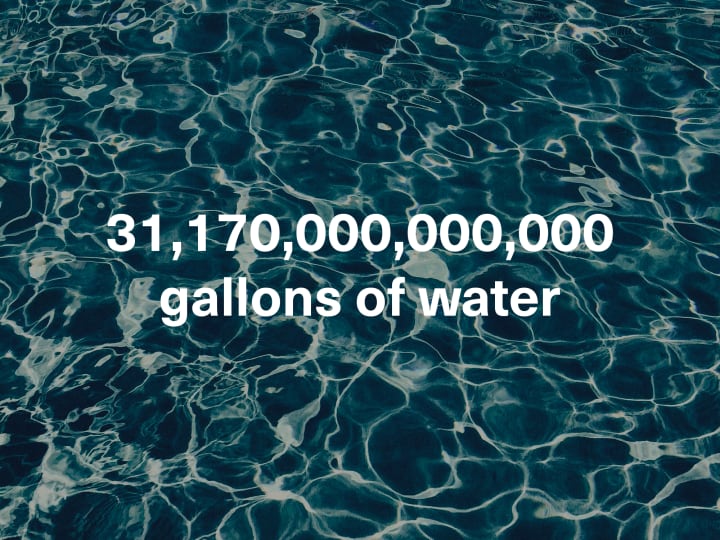How Your Clothes Are Really Made (And What You Can Do About It)
Fast Fashion 101—Facts from a Fashionista

I’ve always had an eye for fashion. Ever since I was young, the “closet world” has been my comfortable place—Choosing the hottest combinations from my mom’s “grown up” drawers, playing dress-up in her new designer boots, window shopping and craving that five-kajillion-dollar jacket for no reason other than it was cool as hell.
As I got older, I got more and more involved in the sustainability movement. Don’t get me wrong—I’m proud of my environmental awareness, and my consciousness around my practices as a consumer. But as a natural fashionista? It was a curse.
The more research I did, the more I recognized how multifold the world of sustainable fashion is—and how unbelievable unsustainable the general practices tend to be. For those unaware, sustainable fashion brings both environmental and socio-economic concerns into the forefront. These practices not only include the production and manufacturing of these products, but their distribution and consumption in the marketplace. And, in the industry, we’re steamrolling pretty deep down that rabbit hole; recent evaluations predict that, by 2030, the industry’s water consumption will reach a whopping 31.17 trillion gallons, and its carbon footprint increase to 2,791 million tons. So yeah, our footprint might be well-dressed in designer boots, but those heels are grinding serious holes in the health of our environment.
First, what exactly is sustainable fashion?
First, consider “fast fashion.” That’s the type of quick, easy shopping we tend to lean towards today as clothing consumers—the $5 Made-In-Thailand T-Shirt from your go-to store, that was obviously manufactured for pennies, and whose threads begin to unravel after one wash. Cheap by the dollar, and by the quality.
Alternatively, sustainable fashion is the antithesis. Ethical fashion, or sustainable fashion, is that which is made to last—sustainability on all fronts. It considers all areas of the product’s lifecycle, and all hands which go into making and consuming the item (read: socio-ethicism).
Generally, fast fashion tends to lack in five essential areas of production:
1. Water use

Remember that stat I dropped earlier? Yeah. The amount of water it takes to manufacture and distribute the cheap halter tops we go-to grab at stores like Forever 21 and H&M is staggering, and is a major toll on our agricultural resources. The fashion industry isn’t the only culprit, but it’s crippling. Plus, you think about the amount of water it takes to mass-produce items of clothing that have a short lifespan regardless? That’s wasteful on all fronts.
2. Chemicals

Think about the hands that go into making your wardrobe. Often, the environments in which your fast fashion is manufactured are wrought with dangerous chemicals and dyes. We may not feel it so much, but the thousands of underpaid workers exposed to it do, and so do their families when they go home—and so does their community, since these hazardous chemicals tend to seep into the community’s water supply and affect the greater public. This is one of the awful, more subtle realities of the fast fashion industry. Yeah, that faux-leather jacket is adorable—but is it worth risking the health of the thousands of people involved in the process of its production?
3. Short life cycle
As previously mentioned, this is an unfortunate reality in the world of fast fashion, and one all of us shoppers are familiar with. It can feel so good to snag a $10 cardigan from your favorite store (and it wasn’t even on clearance!), but you go home, and three washes later, the material has already started thinning out. A few more uses, and your three-week old outerwear is done for.
Brands with an eye for sustainable fashion have been scouting for new and innovative ways to lengthen the life cycles of their clothes (“slow” fashion), improving both the quality and the durability of their items.
4. Waste, waste, waste
And more waste. This waste comes from every area of the item’s life cycle—waste in its manufacturing, waste in the resources of its distribution, and waste of the item itself after it’s worn out and disposed of. So much trash goes into (AND COMES OUT OF) the manufacturing process. In addressing this, some companies have started creating clothing out of recycled materials. Environmentally conscious consumers (such as myself) can address this concern by recycling our own worn-out clothes, and supporting these brands that reflect these values.
5. Agricultural detriments
You wouldn’t believe the kinds of awful pesticides that go into the production of your clothing. A material as common as conventional cotton makes up 25% of the insecticides used in the industry, across the world. These pesticides not only affect the farmers and manufacturers harvesting your crop top, but can also affect you, too—these pesticides can seep their way from the soil into our clothing, and their existence in our wearable garments have been linked to conditions ranging from fetal damage to sterility in humans. On the end of the consumer, opting for natural, organic materials instead of conventional cotton or synthetic fabrics is one way to address this concern.
Sustainable fashion for a fashionista. Is it possible?

And… Drum roll… YES!! I’m just as much of a fashion enthusiast as I was when I was a little girl, scavenging my mom’s clothing rack and playing tightrope in her designer stilettos. Only now, I can enjoy my fashion and feel fantastic about the clothing that I wear, knowing that I look absolutely fabulous and I didn’t screw over the environment in my choice of consumption.
So what can you do? Well, you can join me. Now, I opt for natural, organic materials in my clothing. I keep an eye out for new brands that are transparent about how their pieces are made. I support brands that are committed to sustainability and spread the word about them—in fact, I recently came across this brand, Ruff Hewn, that’s committed to making denim out of plastic, recycling up to 20 water bottles in every pair of jeans. Pretty cool.
I shop for locally sourced (often vegan) brands, and… yes, I sew holes in my sweaters. You can’t deny: That secondhand aesthetic is pretty in right now. Who knew environmental activism could look so good?






Comments
There are no comments for this story
Be the first to respond and start the conversation.